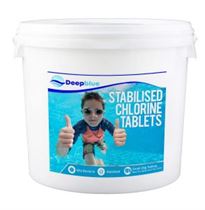Blogpool, Buying Guide, Hottub, Maintenance
How to Choose the Right Hot Tub for Your Home: A Buyer’s Guide
Buying a hot tub is a significant investment that can enhance your lifestyle, but with so many models on the market, it can be tough to know which one is right for you. Whether you’re looking for a hot tub to relax in after work, a place for family bonding, or a social hub for entertaining guests, this guide will help you make an informed decision.
Step 1: Determine Your Needs and Preferences
Before diving into the technical details, it’s important to clarify what you want from your hot tub. Consider the following:
- Usage: How often do you plan to use the hot tub? Is it for relaxation, therapy, or entertainment?
- Users: How many people will typically be using the hot tub? If it’s just for you and your partner, a smaller model will suffice. However, if you plan to host parties, you’ll need something larger.
- Space: Do you have enough space in your backyard or patio to accommodate the hot tub? Measure the area where you plan to install it and consider the need for extra room for steps, covers, and seating.
- Climate: The UK’s weather can be unpredictable, so you’ll need a hot tub that can withstand cold, wet conditions if you plan to use it year-round.
Step 2: Choose the Right Size
Hot tubs come in a variety of sizes, from small 2-person models to large 8-person tubs. Here are the common categories:
- Small (2-3 person): Ideal for couples or individuals who want a compact tub for private relaxation. These models are also great for smaller spaces.
- Medium (4-6 person): Perfect for families or small gatherings. A medium-sized hot tub offers more versatility without taking up too much space.
- Large (7+ person): Designed for entertaining and socializing, larger hot tubs can accommodate more people. However, they require more space and upkeep.
Step 3: Consider the Features You Want
Modern hot tubs come with a range of features that can enhance your soaking experience. Depending on your preferences, you may want to consider the following:
- Jets: If you’re interested in hydrotherapy, look for a hot tub with strategically placed jets. Some models offer adjustable jets that allow you to control the pressure and direction of the water flow.
- LED Lighting: LED lights add ambiance to your hot tub experience, especially for evening use. Some models allow you to change the color of the lights to suit your mood.
- Sound System: Many hot tubs come with built-in speakers that allow you to listen to music or podcasts while you soak. Some systems are Bluetooth-enabled, so you can connect your phone wirelessly.
- Wi-Fi Connectivity: If you want to control your hot tub remotely, look for models that offer Wi-Fi connectivity. This feature allows you to adjust the temperature, turn on the jets, and even schedule maintenance from your smartphone.
- Energy Efficiency: Hot tubs can be energy-intensive, especially if you use them frequently. To minimize your energy bills, look for models with high-quality insulation, energy-efficient pumps, and programmable heating systems.
Step 4: Choose the Right Material
Hot tubs are made from a variety of materials, each with its pros and cons:
- Acrylic: Acrylic hot tubs are durable, easy to clean, and available in a wide range of colors and finishes. They tend to be more expensive, but they’re a good long-term investment.
- Vinyl: Vinyl tubs are more affordable than acrylic models, but they’re less durable and prone to punctures. They’re often found in inflatable or portable hot tubs.
- Rotomolded Plastic: These hot tubs are lightweight and affordable, but they don’t offer the same level of insulation or comfort as acrylic models. They’re a good option for budget-conscious buyers.
Step 5: Installation Considerations
Installing a hot tub is more complicated than simply plugging it in and filling it with water. Here are a few things to consider:
- Foundation: Your hot tub will need a solid, level foundation to support its weight when filled with water. Concrete slabs, reinforced decks, and pavers are common options.
- Electrical Requirements: Most hot tubs require a dedicated electrical circuit. You’ll need to hire a licensed electrician to ensure your hot tub is connected safely and meets local regulations.
- Water Supply: Your hot tub will need to be filled with a garden hose, so ensure the installation site is close to a water source.
- Access: Think about how you’ll access your hot tub. If it’s installed in a secluded area of your garden, you may need to build a path or steps leading to it.
- Privacy: If your hot tub is visible to neighbors, you might want to add privacy features like screens, pergolas, or landscaping to create a more secluded space.
Step 6: Maintenance and Running Costs
Owning a hot tub requires regular maintenance to keep the water clean and the equipment in good working order. Here’s what to consider:
- Water Treatment: You’ll need to regularly check the chemical balance of your hot tub water to prevent bacteria and algae growth. This typically involves adding sanitizers like chlorine or bromine, as well as balancing the pH and alkalinity.
- Filter Cleaning: Hot tub filters need to be cleaned every 1-2 weeks to remove debris and contaminants. Some models come with easy-to-clean filters, while others may require more hands-on maintenance.
- Draining and Refilling: Every 3-4 months, you’ll need to drain and refill your hot tub to ensure the water stays fresh. This is also a good time to clean the shell and jets.
- Energy Costs: Running a hot tub can increase your energy bills, especially if you use it frequently. To keep costs down, look for energy-efficient models and consider investing in a thermal cover to retain heat when the hot tub isn’t in use.
Step 7: Budgeting for Your Hot Tub
Hot tubs come in a wide range of prices, depending on their size, features, and materials. Here’s a rough guide to help you budget:
- Entry-Level (Up to £3,000): Basic models with fewer features, typically smaller in size. Good for budget-conscious buyers or those new to hot tub ownership.
- Mid-Range (£3,000 – £8,000): More advanced models with additional features like adjustable jets, LED lighting, and energy-efficient systems.
- High-End (£8,000+): These hot tubs offer premium features such as Wi-Fi connectivity, top-quality insulation, and extensive seating capacity.
Keep in mind that the initial purchase price isn’t the only cost. You’ll also need to budget for installation, maintenance supplies, and higher energy bills.
Step 8: Read Reviews and Visit Showrooms
Before making your final decision, it’s a good idea to read online reviews from other hot tub owners. This will give you an idea of the pros and cons of different models and manufacturers.
If possible, visit a showroom to see the hot tubs in person. Some retailers may even offer “wet testing,” where you can sit in a filled hot tub to see how it feels.
Summary
Choosing the right hot tub for your home is a decision that requires careful thought and consideration. By determining your needs, understanding the available features, and budgeting for the long-term costs, you can find a hot tub that suits your lifestyle and provides years of enjoyment. Whether you’re looking for a small, relaxing soak or a large tub for entertaining, the right hot tub is out there waiting for you.
Some products you might be interested in:














